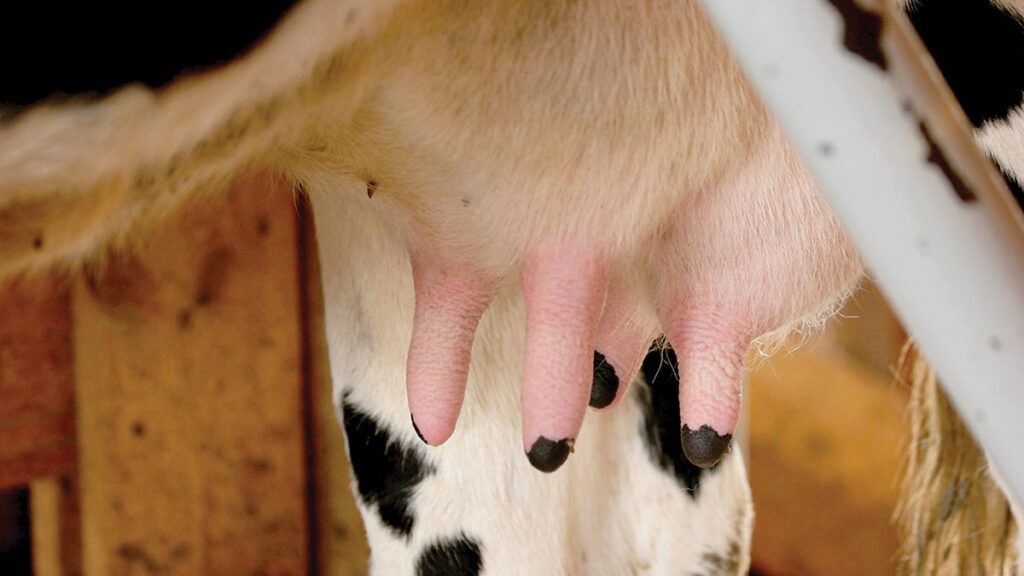
Steps to reducing disease in the udders of dairy cattle
One of the biggest threats to udder health in dairy cattle is mastitis. The infection causes inflammation of the mammary glands.
In advanced cases, it is swollen, red and visible to the eye. The infection can cause the cow significant pain and can impact milk quality and production. “That whole lactation will a lot of times be impacted by that infection to the udder,” Michael Looper, Ph.D., Head of the Department of Animal Science at the University of Arkansas, said. “Cattle can lose a whole quarter of their udder and it may never be what it once was prior to the infection.”
Mastitis can be caused by many things including overmilking, too much pressure during milking, unsanitary conditions or improper milking protocols. There are management practices producers can implement to reduce the incidence of mastitis in their herds.
Pre-Treat and Post-Treat
An important protocol to preserve udder health is following proper pre-milking procedures. Prior to washing and pre-dipping teats, milkers should strip the first couple streams of milk out of the quarters to clean out the teat canal. Stripping also eliminates microorganisms and helps producers to detect new cases of mastitis.
Post-milking requires additional attention as well. “Make sure those teats are sealed with some sort of dip like iodine,” Looper said. “Because that teat canal is open for a period of time and if that animal goes out and she lays down you obviously have an entry port right there on her body and her udder is going to be on the ground and bacteria can enter into the udder then you have mastitis and all kinds of issues there.”
Sealants and udder dips are especially important in climates like the Ozarks. The hot, humid weather spurs cattle to congregate under shaded areas. “Cattle standing around shade typically defecate and urinate and then they don’t want to get out of the shade so they lay down in it and then you have a problem,” Looper added.
Overmilking
Problems with udder health arise if a cow is overmilked. According to Dr. Looper, the average time it takes for a cow to be fully milked is seven minutes. The level of pressure (psi) and pulsation during milking can also impact udder health. “The amount of psi that is coming out and pulling the milk out of the udder, if it is too strong that will obviously irritate the udder and that decreases udder health which will decrease milk quality,” Looper explained.
Proper training
Another management strategy to keep cow’s udders in optimal condition is making sure everyone working on the dairy operation knows the proper milking protocols and routines. Personal hygiene, such as clean hands, go a long way in protecting dairy cattle from udder infections.
Milkers should be wearing latex gloves because hands are a common source of bacteria. The gloves should be kept clean by periodically submerging them in a bucket of sanitizer. This is critically important after milking a mastitic cow. Mastitic cows should be milked last, and the milking machinery disinfected.






